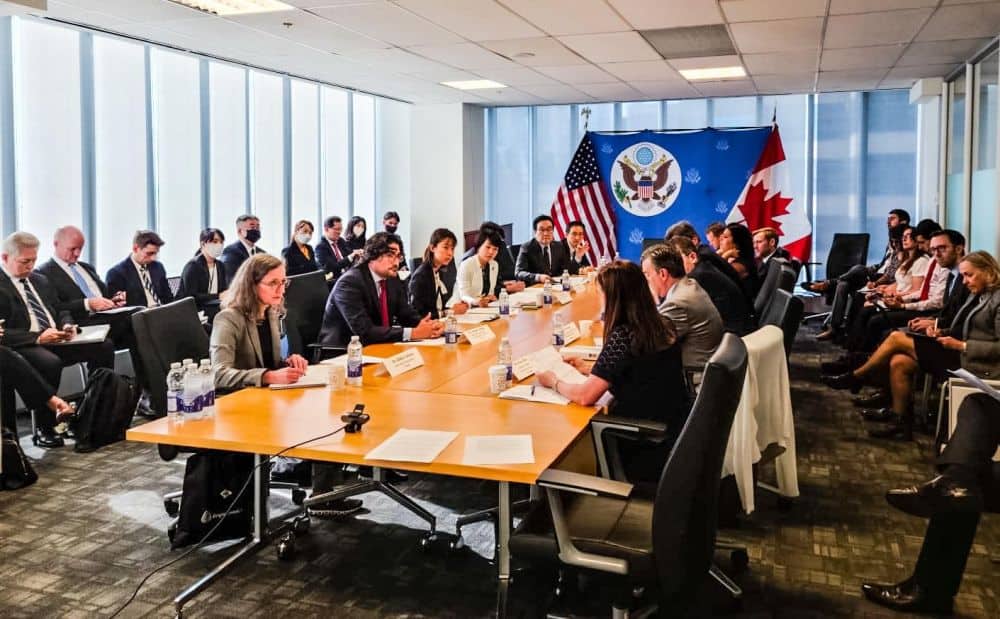
[Image above] The new Minerals Security Partnership announced in mid-June 2022 includes Australia, Canada, Finland, France, Germany, Japan, South Korea, Sweden, the United Kingdom, the United States, and the European Commission. Credit: Under Secretary for Economic Growth, Energy, and the Environment, Twitter
In recent weeks, U.S. news coverage focused heavily on passage of the CHIPS and Science Act of 2022, which aims to bolster domestic production of semiconductor chips. Yet an announcement concerning another important industry—critical minerals—made during the annual Prospectors & Developers Association of Canada convention in mid-June slipped by largely unnoticed.
Critical minerals, as defined by the Energy Act of 2020, are nonfuel minerals or mineral materials that are essential to the economic or national security of the U.S. and have a supply chain vulnerable to disruption. The most recent critical minerals list, published by the U.S. Geological Survey in the Federal Registrar in February 2022, identifies 50 minerals as “critical,” including the much discussed rare earth elements.
In 2021, the U.S. government undertook several efforts to strengthen U.S. critical mineral supply chains, as detailed in the U.S. Geological Survey Mineral Commodity Summaries 2022 report. These efforts focused mainly on funding domestic projects and research, such as investing in the development of rare earth processing facilities in Texas and California by two U.S.-based companies.
The recent announcement, which the U.S. Department of State reiterated in a media note on June 14, turns attention to bolstering foreign collaborations in this area through a new Minerals Security Partnership.
The Minerals Security Partnership is a multinational partnership initiative that aims to ensure critical minerals are “produced, processed, and recycled in a manner that supports the ability of countries to realize the full economic development benefit of their geological endowments,” according to the media note.
The 11 participants in the new partnership are Australia, Canada, Finland, France, Germany, Japan, South Korea, Sweden, the United Kingdom, the United States, and the European Commission. Together they plan to “catalyze investment from governments and the private sector for strategic opportunities … that adhere to the highest environmental, social, and governance standards,” the media note says.
In recent days, several Indian news sites reported there are growing concerns in India over being left out of the new partnership.
“India relies heavily on China for [heavy rare earth elements], which is one of the leading producers with an estimated 70 percent of the global production,” reports New Delhi-based news site WION. “Hence, there is a lot at stake for India.”
According to The Indian Express, the Union Finance Ministry reportedly communicated with the Ministry of External Affairs to explore the possibility of New Delhi joining the 11-member group.
While India traditionally has remained an outlier to such initiatives, the Indian government has ambitious plans to improve India’s standing in various advanced technological areas, for example, renewable energy, decarbonization efforts, and semiconductor production. In addition, this May, India and the U.S. launched a new joint initiative on critical and emerging technologies following a bilateral meeting during the Quad Leaders’ Tokyo Summit 2022.
Learn more about India’s goals to advance its infrastructure and technology in the video below.
